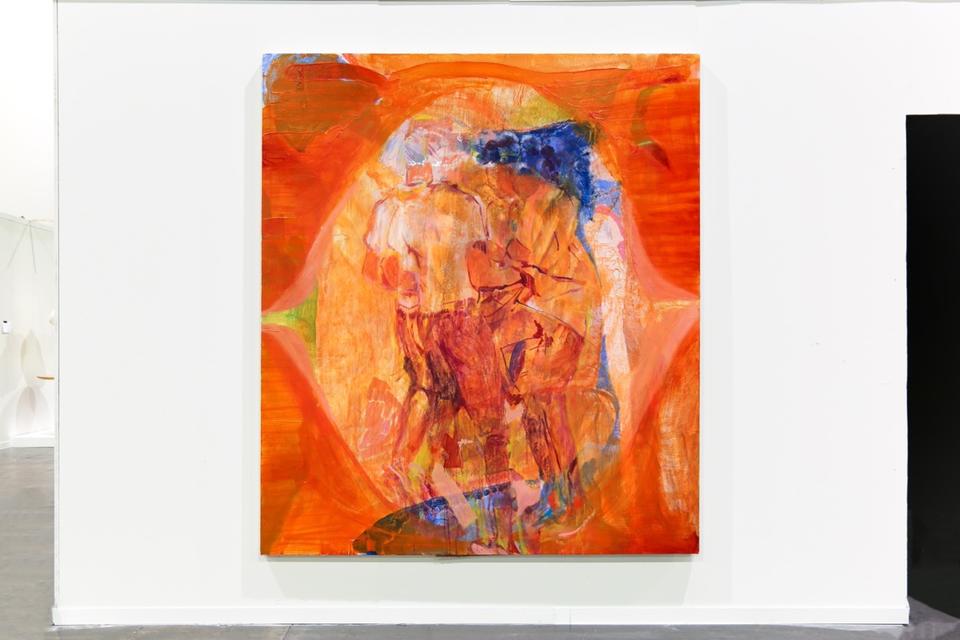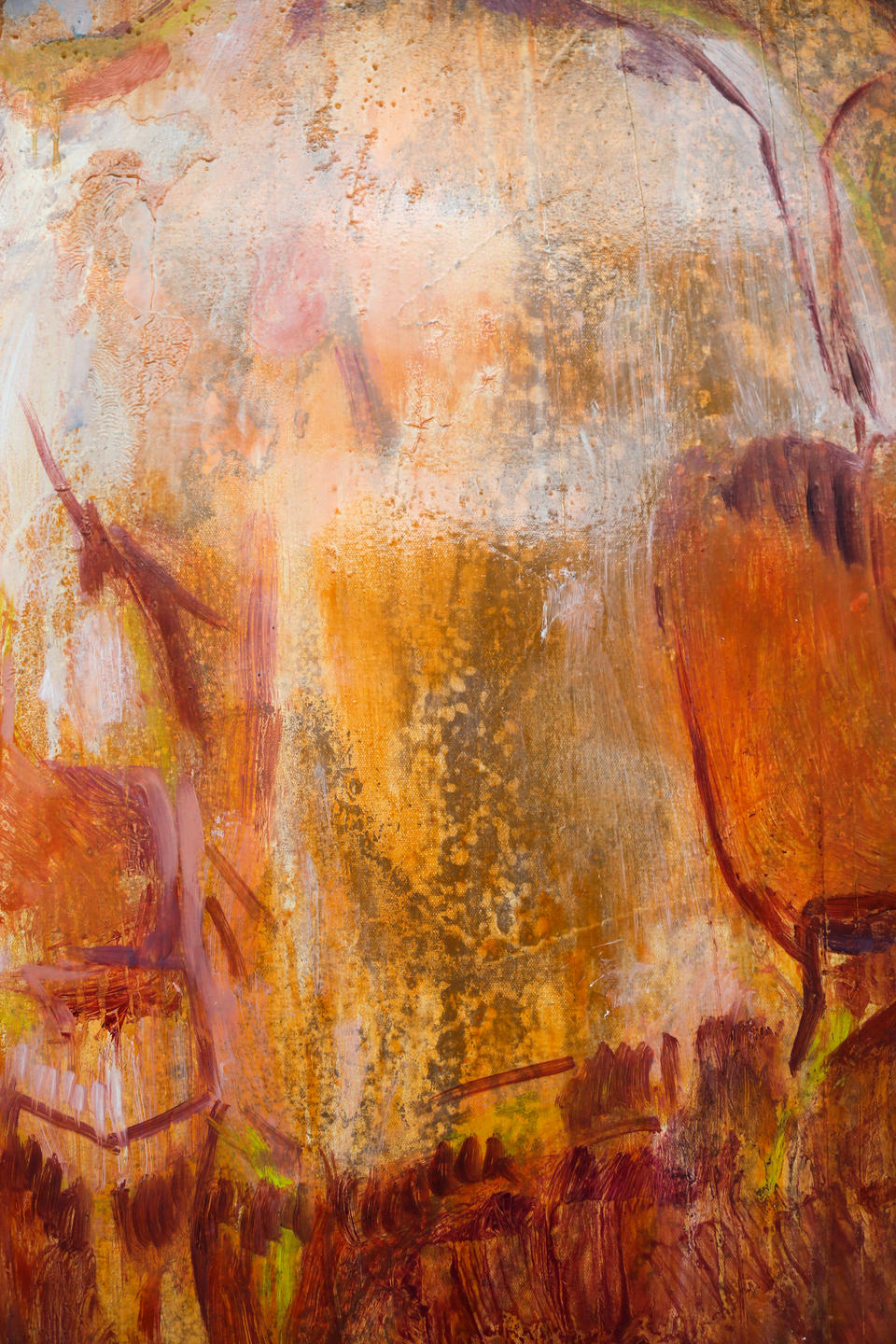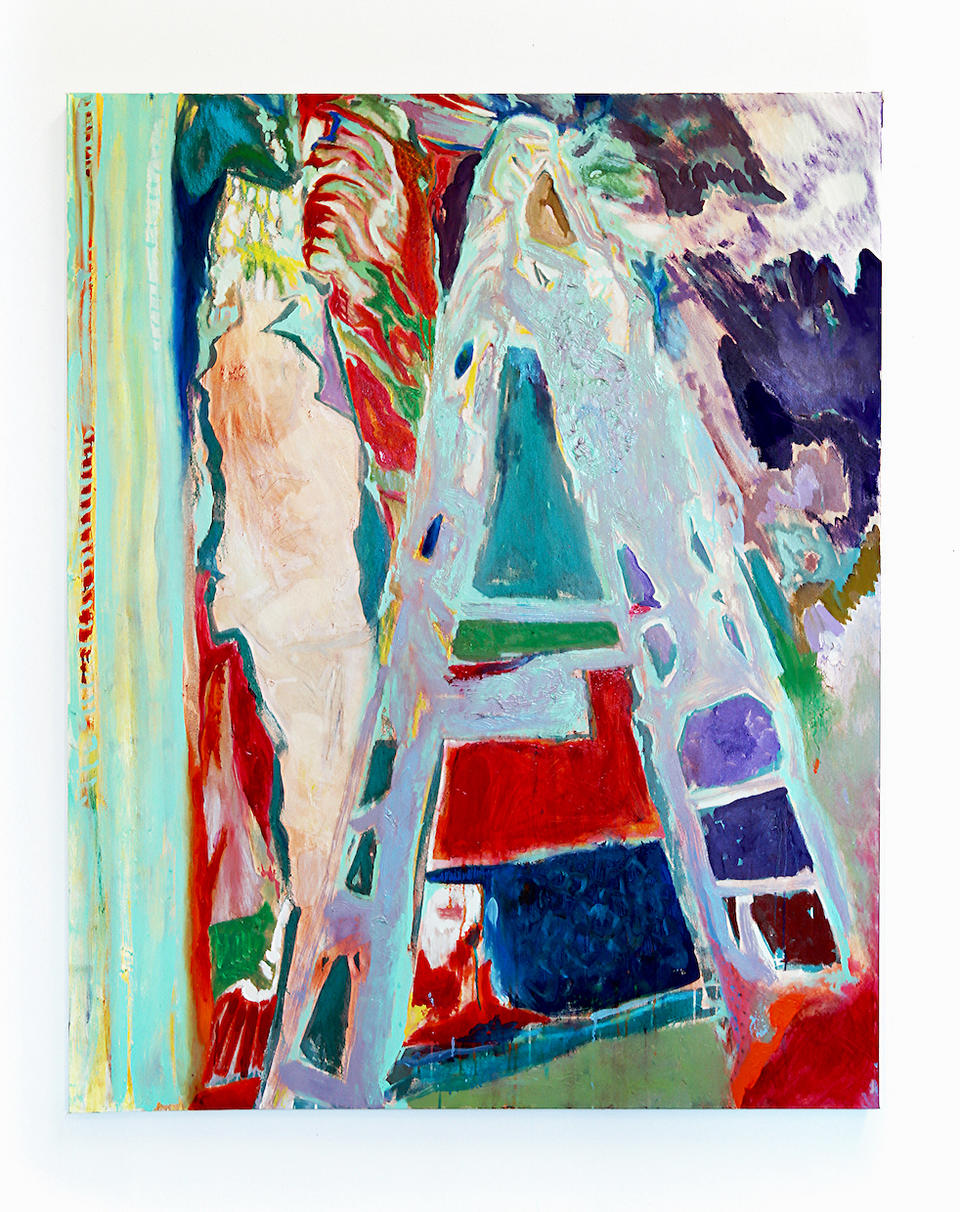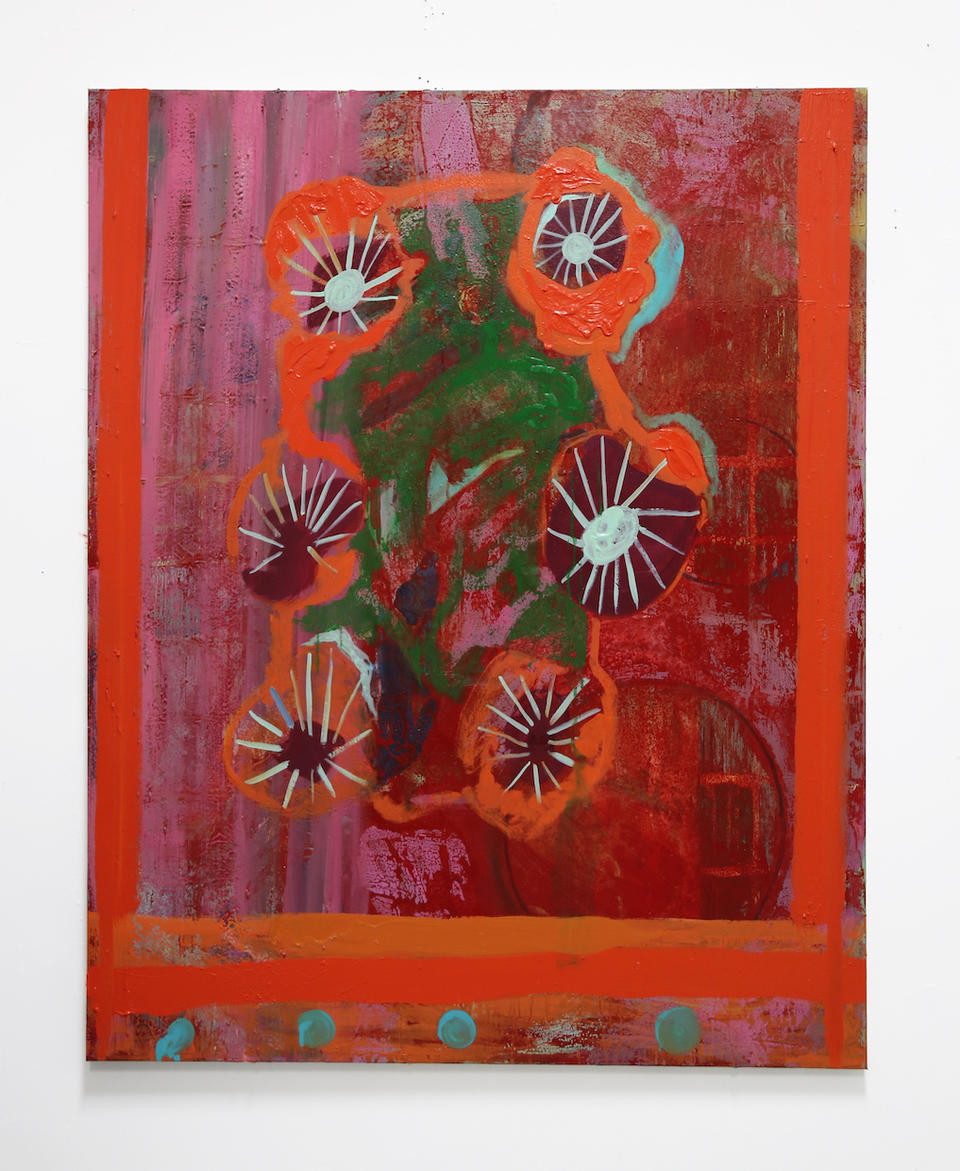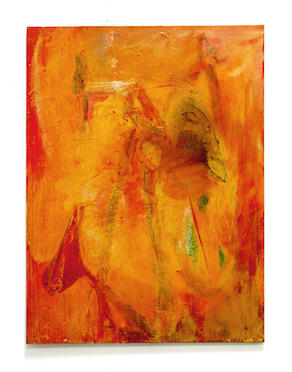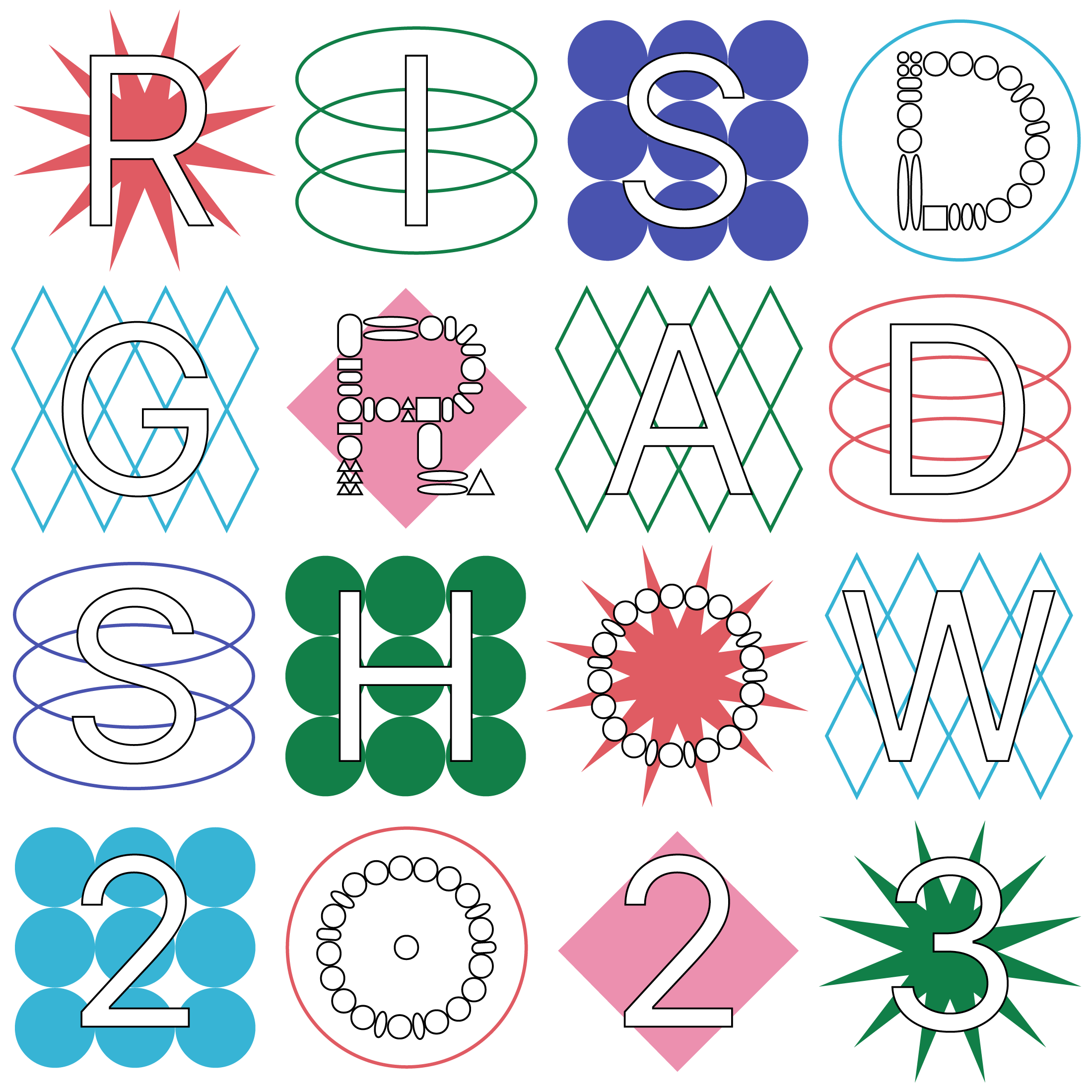Sofia Berger
I’m making work through touch, and viewers are experiencing my work through the assumption of touch, of moves, and a sequence of interactions. But in order for this experience to occur, I require color to build forms and skins upon my surfaces.
I allow the paint to move with my permission—it is marshaled but not controlled. I understand its capabilities and honor them within the parameters that I have assigned to it. I go back and reassign them as needed. I give it consent and then readjust the boundaries. It is with these organic forms that reveal themselves that I am able to recalibrate the image I had in mind. Whether I had previously made several drawings of what I imagine it to be, or I simply base it off an object or scenario existing around me, its environment has been permanently altered with the introduction of total abstraction beneath it. Its conditions and borders are determined in a way that I enjoy—it’s what keeps the act of finding so exciting for me. It can never be replicated and is inherently complicated out of my own freewill. It’s a formula that has allowed me to venture outside of my own rigid shell and has proven to be most generative for me as a painter. I’m effectively tossing a wrench in my own way.
In Ashley Montagu’s Touching: The Human Significance of the Skin, the author explains that the skin is the earliest and largest organ to be formed in a growing fetus, thereby giving individuals an introduction into the world through touch. The skin is semi-permeable; it allows for certain substances to enter while protecting our body (or at least trying to) from any harmful intruders. I start by fabricating the least porous surface possible. I block the pores of the canvas so much so that no paint is able to find its way to the raw, untouched canvas. I’m curious about the ways in which touch impacts other senses, and what a haptic experience does to us on a psychological level.
